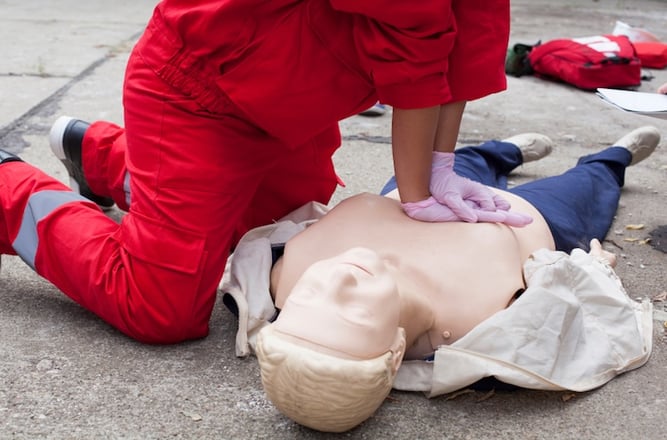 Your shift is just beginning and you’re busy checking out your truck, when the paramedic student arrives, eager for a chance to exercise his new-found knowledge. You guide him through the equipment check and as you’re taking him through the drug box, he begins peppering you with questions about the proper pediatric doses for an array of cardiac meds. Suddenly, you realize it’s been awhile since you reviewed your protocols. As you stumble over your responses while quickly reaching for the Broselow Tape, you realize you could use a refresher. And if you are rusty, it’s a good bet your entire crew could benefit from some continuing education.
Your shift is just beginning and you’re busy checking out your truck, when the paramedic student arrives, eager for a chance to exercise his new-found knowledge. You guide him through the equipment check and as you’re taking him through the drug box, he begins peppering you with questions about the proper pediatric doses for an array of cardiac meds. Suddenly, you realize it’s been awhile since you reviewed your protocols. As you stumble over your responses while quickly reaching for the Broselow Tape, you realize you could use a refresher. And if you are rusty, it’s a good bet your entire crew could benefit from some continuing education.
Ongoing training is important. Not only do our skills wane over time, but medicine is one of the most dynamic areas of science, constantly changing and marching forward. Without continuous refreshers, your knowledge base and skills quickly become obsolete. It’s crucial to stay abreast of the latest information and techniques and the only way to do that is through aggressive continuing ed.
Fortunately, The National Highway Traffic Safety Administration, in conjunction with the U.S. Department of Health and Human Services, has developed effective national standards that include recommendations for continuing education for paramedics and EMTs. And it all begins with a needs assessment.
National Standards in Continuing Education
For ongoing training programs to be effective, they must target specific performance areas, which are identified through the needs assessment. With input from various players – field personnel, administrators, and those controlling the budget – training programs can be tailored to specific objectives.
The national standards include numerous creative approaches for continuing education. Here are just a few:
- Lecture programs and conferences: An excellent way to obtain continuing education credits while networking with other professionals.
- Continuing education courses: Identify those that are nationally recognized to insure relevant course content and quality of instructors.
- Approved self-study programs: Allow you to work at your own pace and from remote locations, all accentuated by modern computer technology.
- Case reviews: By reviewing actual calls or hypothetical scenarios, these exercises provide an excellent means of networking with local medical directors and physicians.
- Grand rounds: If possible, attending grand rounds in area hospitals can expose paramedics to a vast range of patients and conditions, as well as vital interaction with physicians and medical students.
- Teaching: One of the most effective ways to keep your skills and knowledge base sharp is to get involved in teaching, so take advantage of instructional opportunities, even informal training sessions at the station.
It’s important to remember that continuing education is not over when you walk out of the classroom. It is vital to evaluate both new and existing skills. Here are their recommendations:
- Field Performance Evaluations
- Hospital Clinical Performance Evaluations
- Skills Workshops
- Performance Examinations
Recommended Training Topics
The standards also recommend topical module categories, along with suggested hours of continuing education per topic. The modules include:
- Preparatory – such as illness and injury prevention
- Airway Management and Intervention
- Patient Assessment
- Trauma
- Medical
- Special Considerations
- Operations
When it comes to continuing education for EMS personnel, there is no need to restrict yourself to just one method. The national standards recommend a combination of techniques and methodologies. This approach insures a comprehensive means of keeping pace with the rapid advances in prehospital medicine. Remember, one of your primary responsibilities as a paramedic is to never stop learning.
EMT-Paramedic and EMT-Intermediate Continuing Education National Guidelines,
http://www.nhtsa.gov/people/injury/ems/Nscguide/guidelin.htm.













